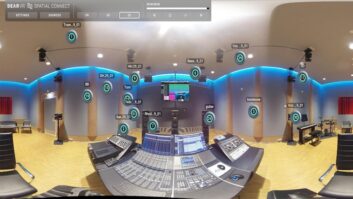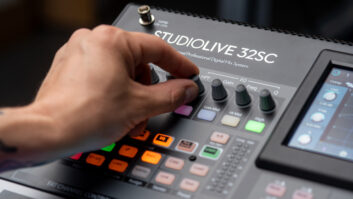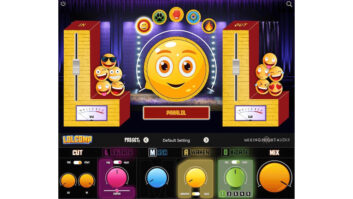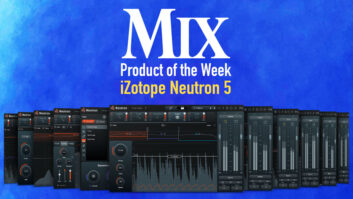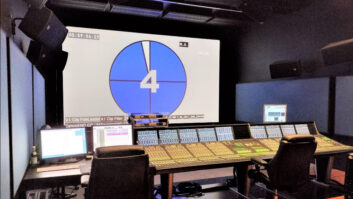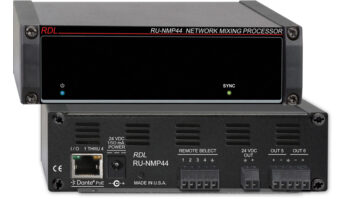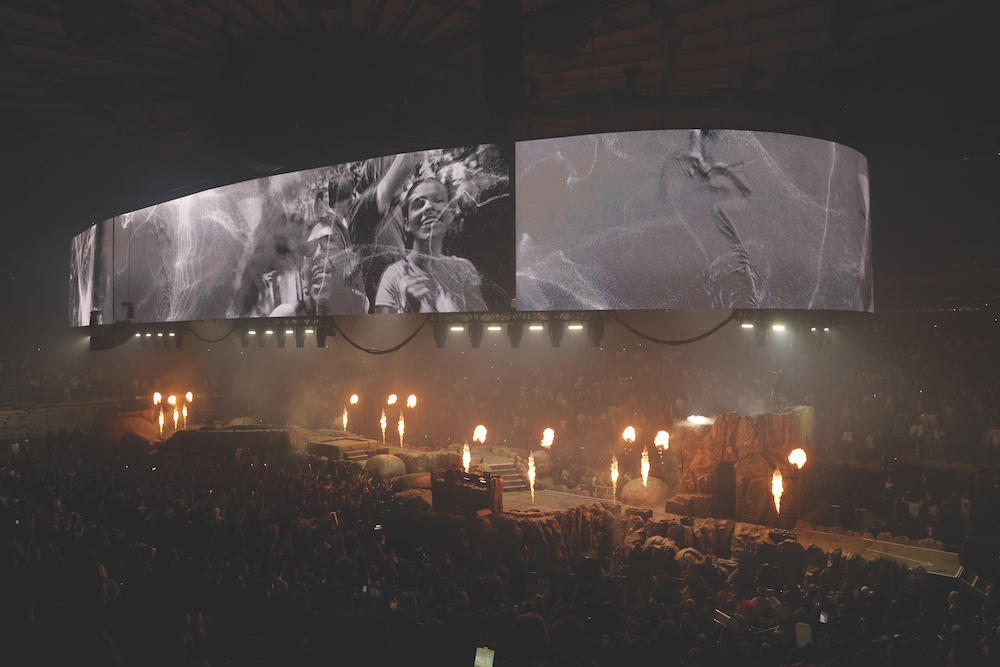
New York, NY (March 13, 2024)—“This show is this generation’s punk rock,” says Pooch. We’re backstage underneath the seats of Madison Square Garden, and the veteran FOH engineer is grinning ear-to-ear. “When we were kids going to punk rock shows, there was that energy of aggression; that’s what this show is for these kids—and the energy in that arena is intense!”
The man would know. Ken “Pooch” Van Druten has mixed front-of-house for everyone from Iron Maiden and Linkin Park to Kiss and Justin Beiber, making him a good fit to mix platinum-seller Travis Scott, whose concerts take place in the space between hip-hop, pop and the heavy stuff. The Circus Maximus tour, supporting Scott’s recent Utopia album, finds the rapper and his DJ, Chase B, ruling an arena-length stage that resembles a cartoon fever-dream rendition of Easter Island, complete with CyberMotion lifts, copious amounts of pyro and lots more. While the staging may be unorthodox, however, that’s nothing compared to the sound.
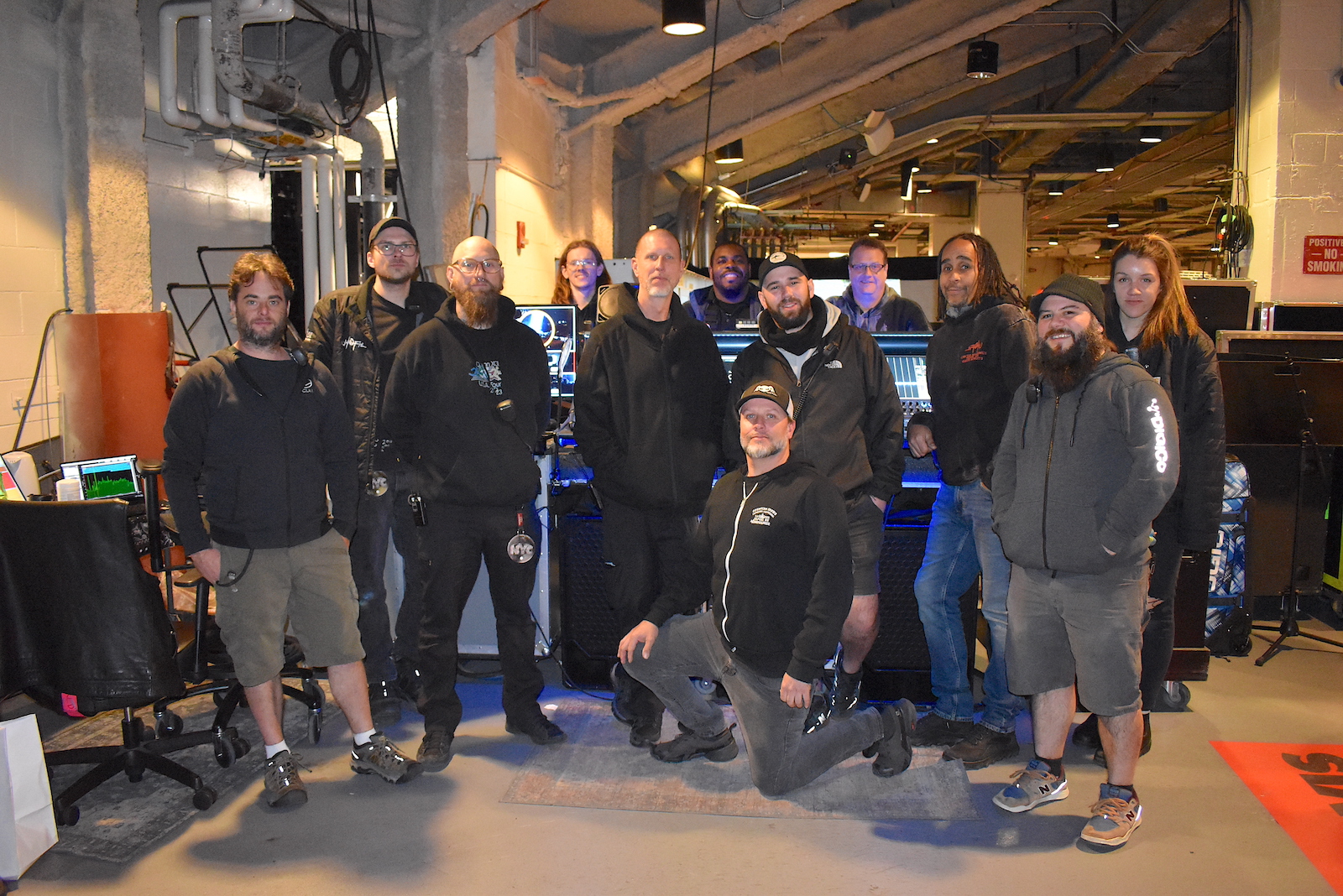
Carrying audio production from Clair Global, the tour sports a massive in-the-round Cohesion P.A. system that shares ceiling space with an oval-shaped, continuous video screen, extensive lighting and more. The Cohesion system is flown in what amounts to a dozen hangs per side, arranged as stereo pairs, typically with 16 boxes per hang—mainly CO10s, due to weight restrictions. In all, 202 CO10s and 16 CO12s cover the assembled masses, thanks to deep curves on the hangs that create coverage from the stage lip to the rafters.
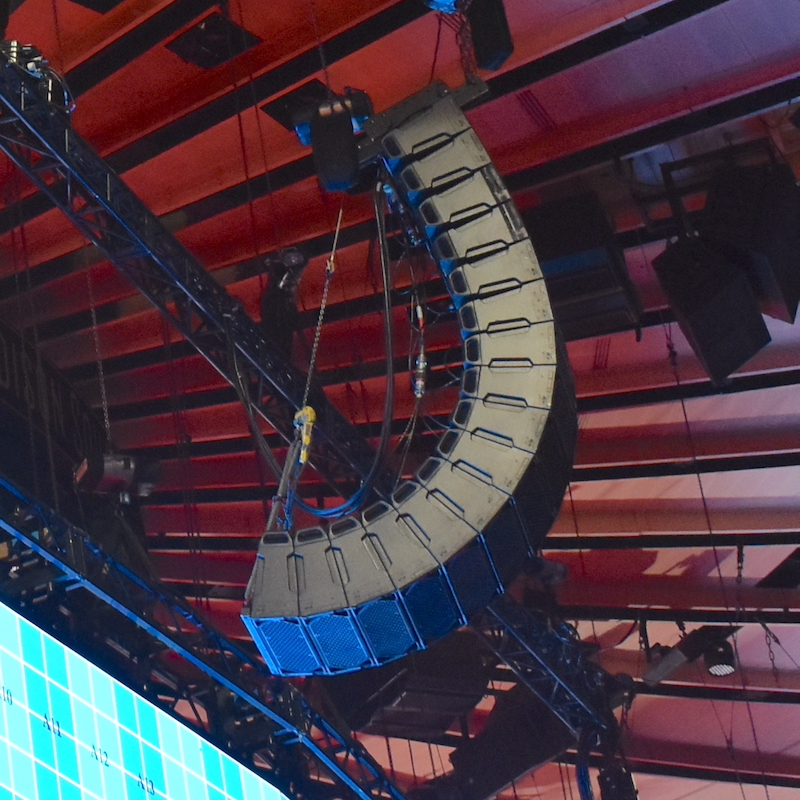
“You don’t have a lot of distance for the hang to open up,” says system engineer Huntington. “Some of the wrap we do looks extremely drastic—especially since the bottom of the hang actually has to be more of a front fill—but it’s nice that you have the ability to do it.”
The hangs—networked via Dante with an analog backup—work in tandem with a jaw-dropping 66 subs on the arena floor. Ready to rumble (literally), there’s two rows of 33 subwoofers per side, with each row placed along the dasher so that all subs face inwards to sum at the center of the arena floor—which is to say, right on the stage. To avoid sub information canceling out or creating anomalies, Huntington treats the stage, hangs and rows of subs like two separate stages placed back-to-back down the length of the arena floor. Using this approach, the hangs closest to the center of the row of subs are treated as a zero line for time alignment, and then blocks of subs within the row are gradually delayed to create an overall arc and avoid cancellation.
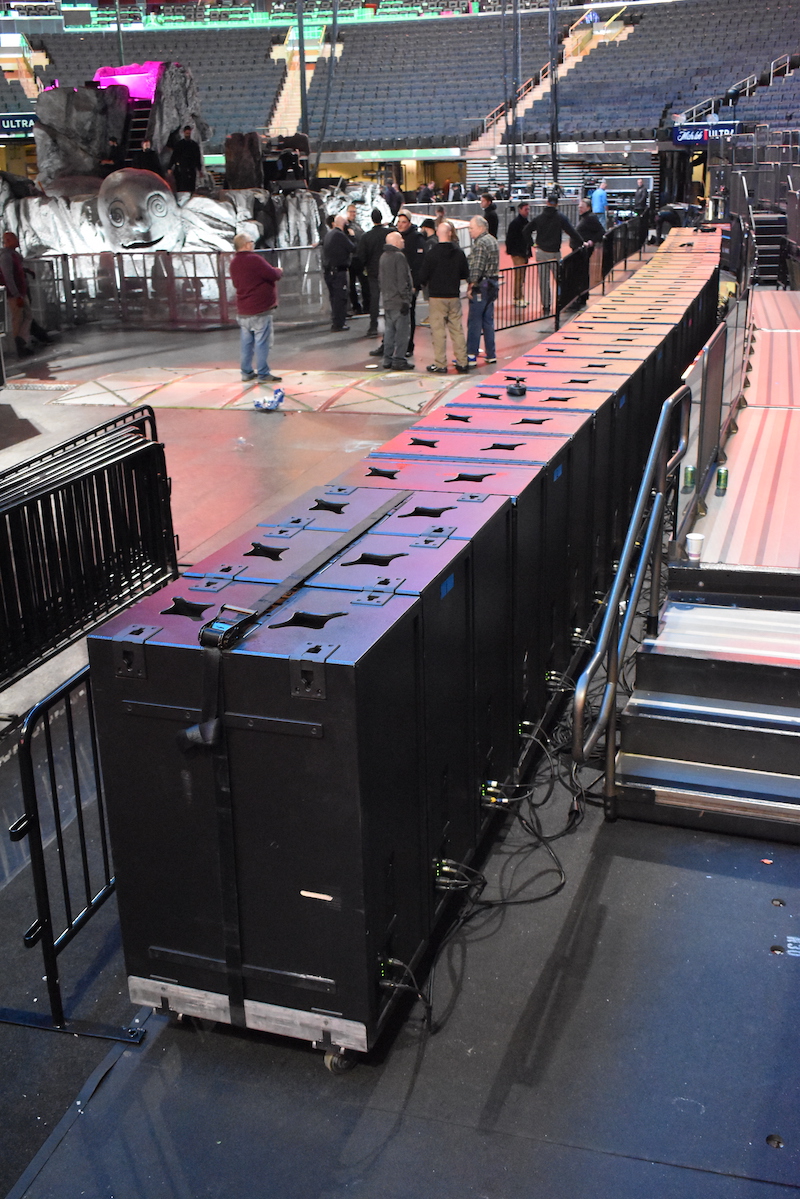
The result is, well, loud. “Where they sum,” says Pooch, “right on the center of the stage where Travis is, it’s brutal—which he likes.” The 14,000 kids at each sold-out show like it, too, and helping the performers onstage hear themselves above the kids and the P.A. is monitor engineer Justin Hoffmann, who’s looked after Scott’s stage sound for the last nine years. On the Circus Maximus tour, he’s using a DiGiCo Quantum 338 console to create mixes, sending them to the performers’ in-ear monitors. While Scott’s past tours have carried extensive monitor systems based around floor wedges, sidefills and more, the current production finds the artist, Chase B and guest performers hearing themselves via JH Audio JH16 earpieces on Shure PSM1000 packs. Elsewhere in the RF arrangements, the vocals are captured via Sennheiser Digital 6000 handhelds with MM 435 capsules.
Both the mix positions are located backstage, away from the mayhem of the arena floor, so at FOH, Pooch watches the show via remote cameras and hears it through a pair of Cohesion CP6+ self-powered compact loudspeakers, with an additional sub hidden behind his DiGiCo SD12 console. “I’m not using a pair of Genelecs or Tannoys because I want the sonic signature of the box to be the same as what’s happening out there,” he explains.
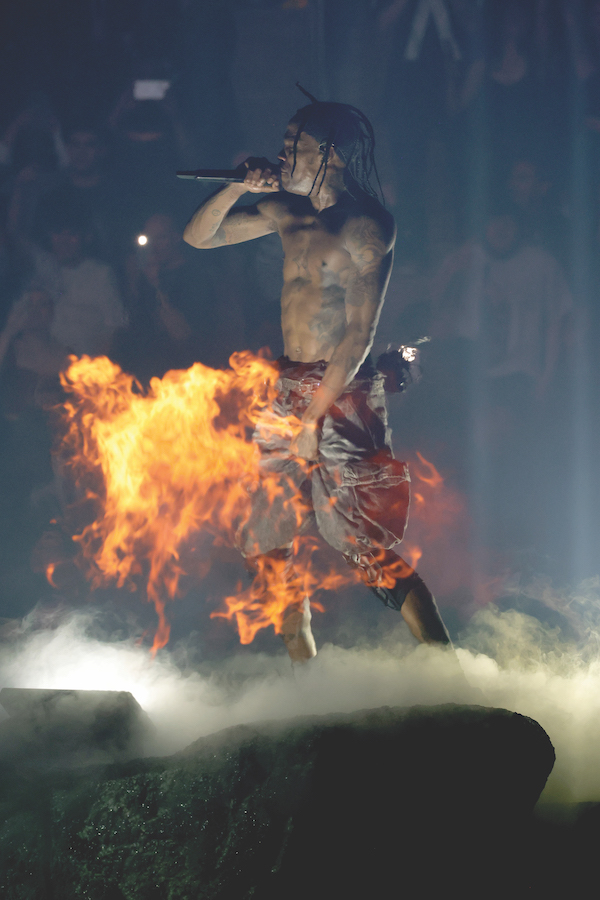
A Waves server is on hand, providing a selection of favorite plug-ins like the CLA 76, MondoMod, H-Reverb and Scheps Parallel Particles among others, but there’s a bit of outboard gear, too, like a Stove unit from Hendy Amps. “I have it across the mix buss insert; it’s harmonic distortion basically,” says Pooch. “It takes 2k transients and rounds them off so they sound less digital and more analog. The only other unit is an RND Master Buss Processor that I’m using for its spread feature, where you can take frequencies and spread, push or pull them in the mix. I have it on the vocal group to make it wide in comparison to where the playback is—because when you’re talking about a show that’s a left and right and a vocal, that vocal better be the focus. The marquee outside says ‘Travis Scott,’ and you’d better be able to hear every single thing he’s doing.”
If it sounds like there isn’t much in the way of inputs, that’s true, and as Pooch explains, that actually makes the show far more challenging to mix: “You might think, ‘oh, it’s four inputs—set it and forget it and watch the show,’ but it’s not like that at all. If I have 100 inputs and the guitar dies, I have another 98 inputs that I can hang on to until the guitar gets fixed. With this, there are only a few inputs and it’s not just playback—it’s a DJ performing, doing different filter sweeps, flying different volumes at me, inserting an EQ—and all that is different every time. Chase B is a great DJ, so I need to maintain the artistry of what he’s doing, and that can be a challenge when we have 202 P.A. boxes turned way up and I’m working with something that, say, doesn’t have any information under 200 Hz. You still want that full sound, right? So you wouldn’t think with four inputs that I’d have to turn a bunch of knobs, but it’s constant—and that’s what makes it exciting!”

